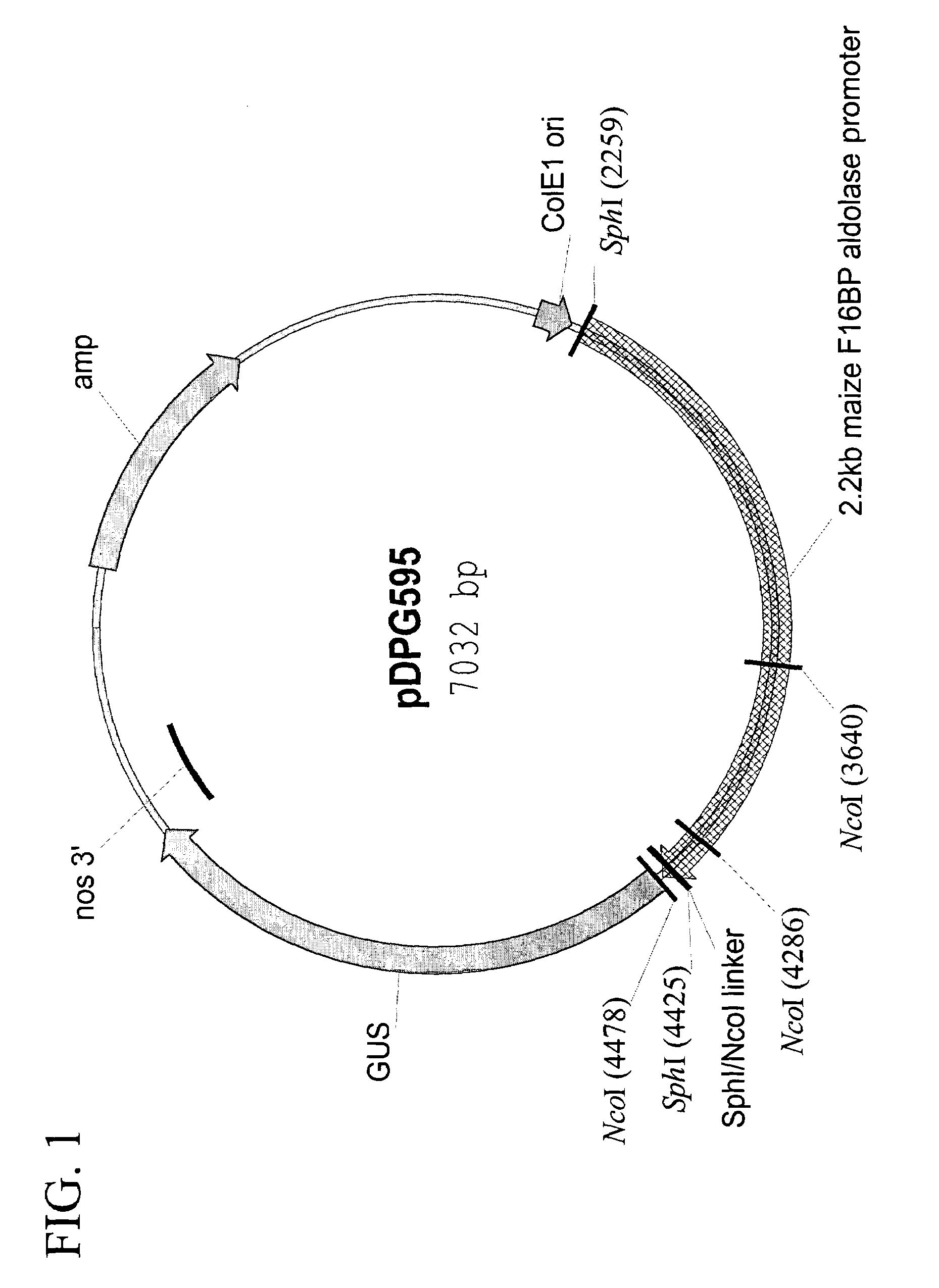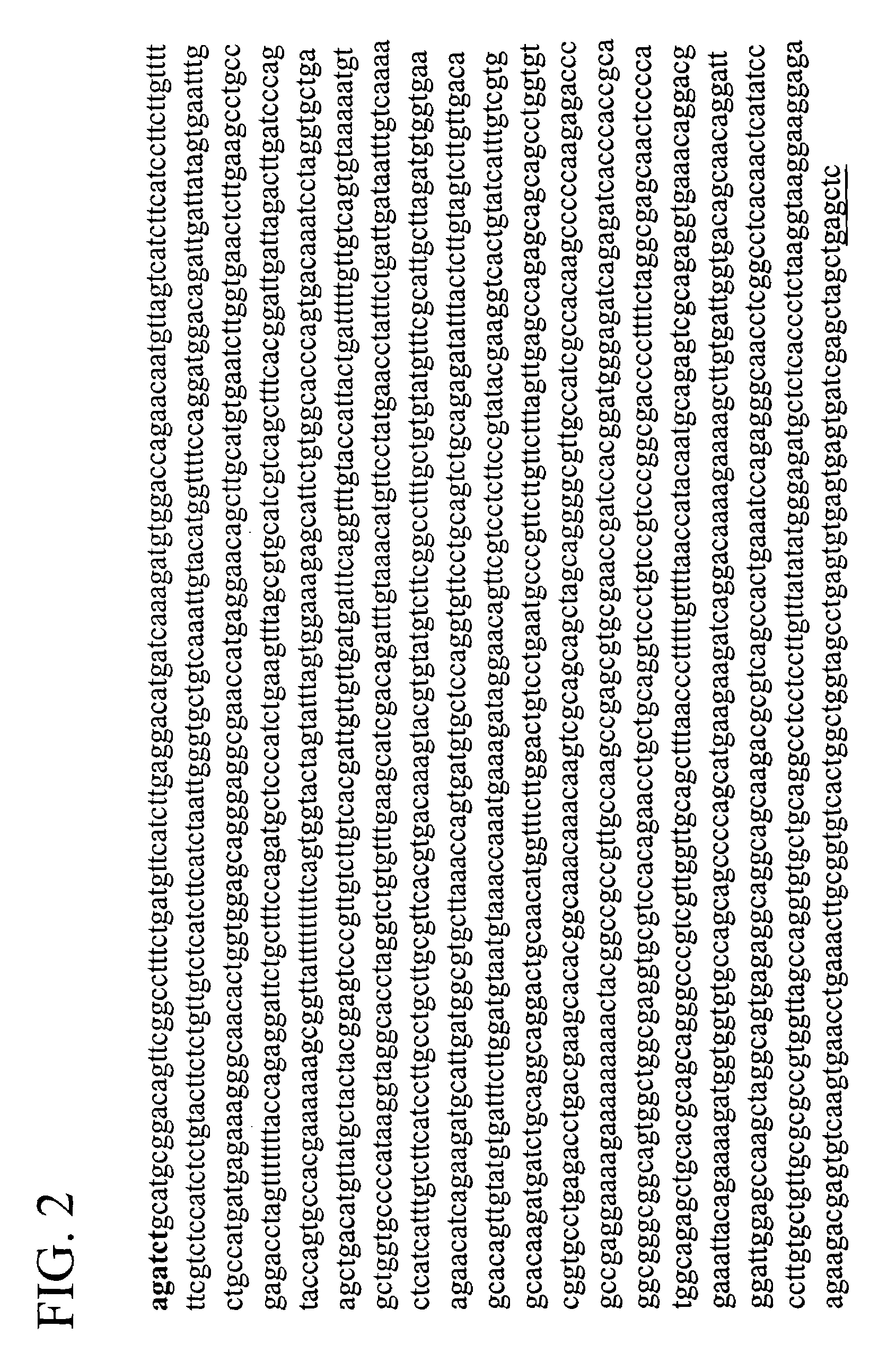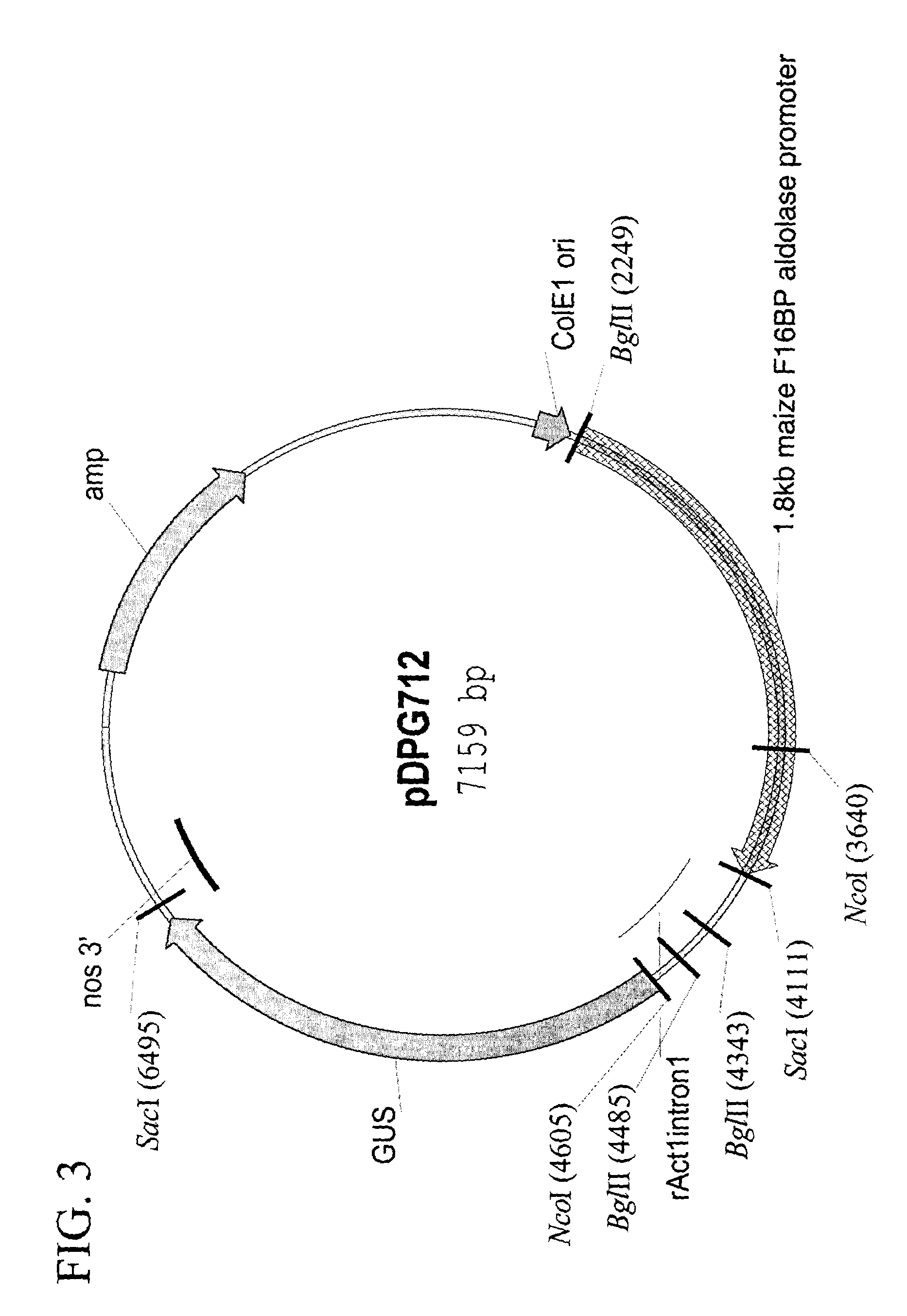Maize chloroplast aldolase promoter compositions and methods for use thereof
a technology of promoter composition and chloroplast, which is applied in the field of transgenic plants, to achieve the effects of enhancing environmental or stress resistance, enhancing grain composition or quality, and enhancing nutrient utilization
- Summary
- Abstract
- Description
- Claims
- Application Information
AI Technical Summary
Benefits of technology
Problems solved by technology
Method used
Image
Examples
example 1
Isolation of a Zea mays Chloroplastic F16BP Aldolase Promoter
[0346]A fragment of a maize aldolase cDNA was isolated and used as described herein to isolate the maize chloroplastic F16BP aldolase promoter from a Zea mays B73 genomic library. Collar / sheath tissue was collected from pre-tasseling maize plants, RNA was extracted and a cDNA library was prepared using the phagemid vector Lambda ZAP™ (STRATAGENE, La Jolla, Calif.). The collar / sheath cDNA plasmid library was excised from the Lambda ZAP™ phagemid, transformed into E. coli cells and 672 colonies were selected and bound to duplicate nitrocellulose filters for dot-blot analysis. One set of dot-blot filters was probed with 32P labeled, reverse-transcribed B73 poly(A+)RNA isolated from collar / sheath tissue collected from pre-tasseling plants. The duplicate dot-blot filters were probed with 32P labeled, reverse-transcribed B73 poly(A+)RNA isolated from kernel tissue collected from ears 18 to 30 days after pollination, preferably s...
example 2
Construction of Chloroplastic F16BP Aldolase Promoter Containing Transformation Vectors
[0350]This example descibes the creation of vector pDPG595. Sequence characterization of a portion of the 6.6 Kb genomic fragment in clone 3A2 revealed homology to the rice chloroplastic aldolase exon I (including the transit peptide), intron 1 and the 5′ portion of exon 2. Sequences 5′ to these regions were found to constitute the maize chloroplastic F16BP aldolase promoter. Cloning of the second exon of the putative promoter with the uidA / nos terminator fragment in vector pDPG141 (U.S. Pat. No. 5,990,390) necessitated the creation of an Nco I site within the genomic clone. A non-phosphorylated linker (SEQ ID NO:3 and SEQ ID NO:4) containing the 3′ end of the 3A2 intron 1 and 5′ end of exon 2 was synthesized to contain Sph I and Nco I restriction sites, respectively. The linker was made by hybridizing the two oligonucleotides together to generate the Sph I and Nco I sites (SEQ ID NO:3 and SEQ ID ...
example 3
Transient Expression Analysis of Maize Chloroplastic F16BP Aldolase Promoter Function
[0353]Histochemical staining (Table 8) was used for analysis of expression of the uidA reporter gene (E. coli beta-glucuronidase; Jefferson et al., 1986) fused to the maize chloroplastic F16BP aldolase promoter of the invention with an actin 1 intron 1 (PCT Publication WO 00 / 70067; pDPG595) or with the rice actin 1 promoter / intron 1 construct (pAct1-D; Zhang et al., 1991). Transient expression analysis was performed using A188×B73 derived suspension cultures using 1×6 (716) (U.S. Pat. No. 5,550,318, incorporated herein by reference in its entirety) callus suspension cells, and excised maize root and leaf tissue. Equal molar concentrations (50 uM) of plasmid DNA were precipitated onto 1.0 micron gold particles and introduced into the tissues by microprojectile bombardment. For the histochemical staining, bombarded tissues were incubated for approximately 40 hrs at 24° C., followed by incubation in bu...
PUM
| Property | Measurement | Unit |
|---|---|---|
| distance | aaaaa | aaaaa |
| pressure | aaaaa | aaaaa |
| pressure | aaaaa | aaaaa |
Abstract
Description
Claims
Application Information
 Login to View More
Login to View More - R&D
- Intellectual Property
- Life Sciences
- Materials
- Tech Scout
- Unparalleled Data Quality
- Higher Quality Content
- 60% Fewer Hallucinations
Browse by: Latest US Patents, China's latest patents, Technical Efficacy Thesaurus, Application Domain, Technology Topic, Popular Technical Reports.
© 2025 PatSnap. All rights reserved.Legal|Privacy policy|Modern Slavery Act Transparency Statement|Sitemap|About US| Contact US: help@patsnap.com



